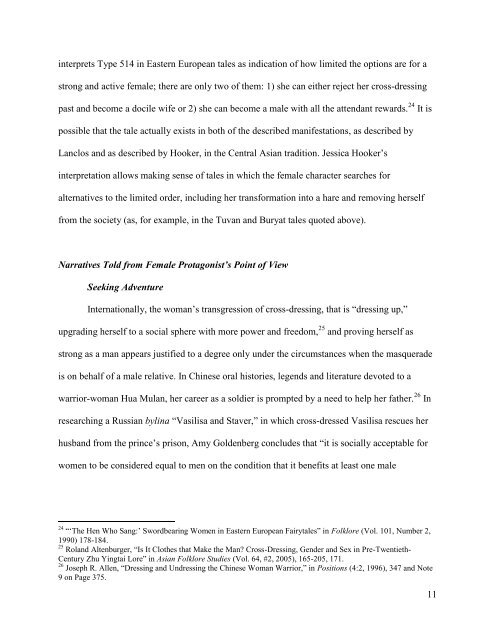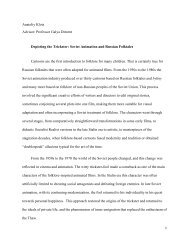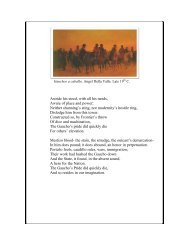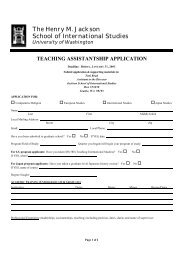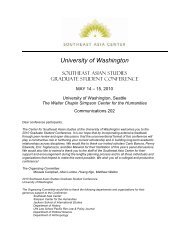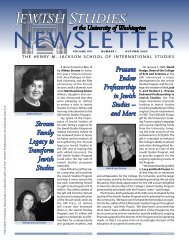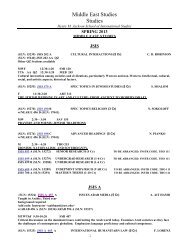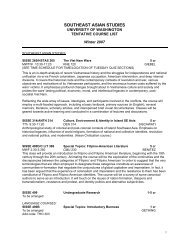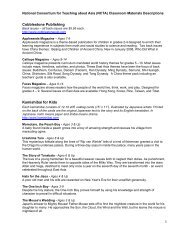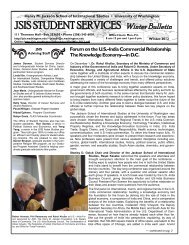to view full paper
to view full paper
to view full paper
You also want an ePaper? Increase the reach of your titles
YUMPU automatically turns print PDFs into web optimized ePapers that Google loves.
interprets Type 514 in Eastern European tales as indication of how limited the options are for a<br />
strong and active female; there are only two of them: 1) she can either reject her cross-dressing<br />
past and become a docile wife or 2) she can become a male with all the attendant rewards. 24 It is<br />
possible that the tale actually exists in both of the described manifestations, as described by<br />
Lanclos and as described by Hooker, in the Central Asian tradition. Jessica Hooker’s<br />
interpretation allows making sense of tales in which the female character searches for<br />
alternatives <strong>to</strong> the limited order, including her transformation in<strong>to</strong> a hare and removing herself<br />
from the society (as, for example, in the Tuvan and Buryat tales quoted above).<br />
Narratives Told from Female Protagonist’s Point of View<br />
Seeking Adventure<br />
Internationally, the woman’s transgression of cross-dressing, that is “dressing up,”<br />
upgrading herself <strong>to</strong> a social sphere with more power and freedom, 25 and proving herself as<br />
strong as a man appears justified <strong>to</strong> a degree only under the circumstances when the masquerade<br />
is on behalf of a male relative. In Chinese oral his<strong>to</strong>ries, legends and literature devoted <strong>to</strong> a<br />
warrior-woman Hua Mulan, her career as a soldier is prompted by a need <strong>to</strong> help her father. 26 In<br />
researching a Russian bylina “Vasilisa and Staver,” in which cross-dressed Vasilisa rescues her<br />
husband from the prince’s prison, Amy Goldenberg concludes that “it is socially acceptable for<br />
women <strong>to</strong> be considered equal <strong>to</strong> men on the condition that it benefits at least one male<br />
24<br />
“‘The Hen Who Sang:’ Swordbearing Women in Eastern European Fairytales” in Folklore (Vol. 101, Number 2,<br />
1990) 178-184.<br />
25<br />
Roland Altenburger, “Is It Clothes that Make the Man? Cross-Dressing, Gender and Sex in Pre-Twentieth-<br />
Century Zhu Yingtai Lore” in Asian Folklore Studies (Vol. 64, #2, 2005), 165-205, 171.<br />
26<br />
Joseph R. Allen, “Dressing and Undressing the Chinese Woman Warrior,” in Positions (4:2, 1996), 347 and Note<br />
9 on Page 375.<br />
11


